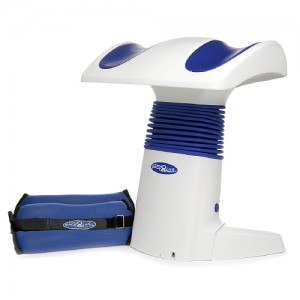Gentle Reader,
Sore back? Been traveling, sitting in an airplane for hours? Did you enjoy a vigorous hiking holiday slogging miles over boulders, roots and bogs for days in a row? Maybe you had back surgery, successful but still stiff and cranky. Or perhaps, you joined a new salsa dance class (that would be my recent experience) for the first time and the instructor had you swinging your hips in directions they hadn’t gone in 50 years.
There’s nothing that slows you down more than a sore back, whether it is caused by over-exersion, chronic arthritis, or a sudden move that sets everything zinging. Here are four tips to get you moving comfortably again.
1. A muscle relaxant for a few days won’t kill you and will give those spasms a chance to quiet down. There are a lot of over the counter medications to chose from. My personal favorite is Aleve. I can usually manage flare ups with frequent doses of Shaklee’s Pain Relief Complex, a herbal COX 2, 5 LOX inhibitor that will not damage your stomach. 99% of the time I can manage a sore back with Pain Relief Complex. It gives me peace of mind to know I am not hurting my stomach or creating any bad side effects.
2. To relieve a sore back my friend alternated between hot compresses and ice, getting the blood to move through the low back. The joints are not easy to flush with blood flow so this is an excellent therapy, especially if you have the leisure to work on the problem. The hottub is excellent for the heat. I use mine every night sending the jets on any sore muscles. In the case of acute sore back, more frequent cold/hot changes will speed the healing along.
3. For immediate relief for a sore back, rub Joint and Muscle Pain Cream or other menthol analgesic into the area. For years I relied on Arnica Montana or Icy Hot cream, but I have found that the pain-relieving effect seems to penetrate more deeply and last longer.
4. I use the Back2Life machine daily and when my back is more sore than normal, I will relief the sore back by getting on the floor with my knees over the top of this contraption several times a day. It’s gentle motion is like a Feldenkrais manipulation. The small, steady lifting and lowering motion of the Back2Life machine, relaxes and opens up the sacrum, allowing blood to flow into the irritated and inflammed area. The machine is set to do its work for about 13 minutes which is just about as long as a busy person can stand to be still, lying on the floor. Past posts about the Back2Life Machine.
In addition to these excellent sore back relieveing strategies, I like to put Peggy Cappy‘s soothing voice on before I go to sleep every night. In fact, her voice usually puts me to sleep. She takes you through a muscle relaxing meditation for about 20 minutes beginning with the eyes and facial muscles. By the time she has progressed through the entire body, you are so still and relaxed, you couldn’t move an arm or a leg. The last part of the CD takes you even deeper and she talks to your “inner mind” about the way sore and damaged joints restore through rebuilding healthy new cells using the nutrients offered by the blood stream. I am convinced that if I were to get an MRI of my lower back and spine today, the deforming and pain-causing spinal stenosis and osteoarthritis would be less evident, just because of her CD. Sound to woo-woo for you? Never mind. Listen to her relaxing CD anyway for relief from the SORE BACK that has you moaning. To read a past post about Peggy Cappy, click here.
Probably the most effective strategy of all is moving. As soon as you can tolerate even a little movement, get up and walk. It is only by getting blood flow back into the disturbed joint that healing can be accelerated.
I wish you well in your journey to a healthy back, and the end of the sore back experience.
Be well, Do well and Keep Moving,
Betsy
206 933 1889